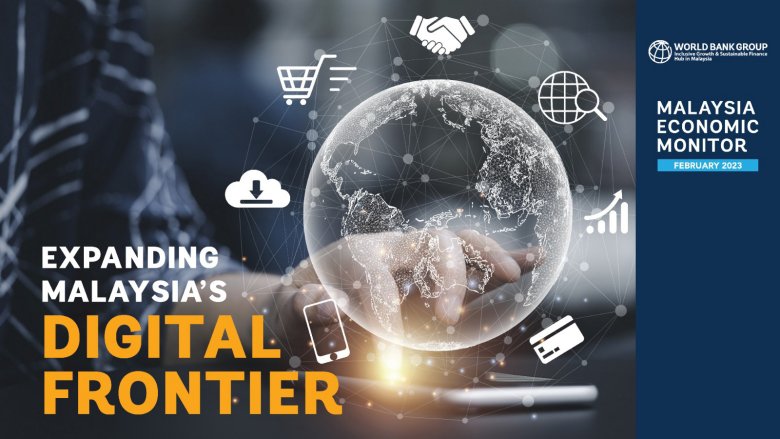- Malaysia’s economic growth is projected to expand by 4.0 percent in 2023 amid an expected slowdown in external demand. This follows a stronger-than-expected recovery of 7.8 percent last year. Malaysia’s strong performance in 2022 overall – was in part due likely to the withdrawals from the Employees Provident Fund (EPF) which contributed to higher private consumption in Malaysia than in other countries. In addition, improved labor market conditions, other government policy measures such as the increase in the minimum wage and cash assistance programs such as Bantuan Keluarga Malaysia provided additional support.
- Recovery is broad-based across firms and sectors. The results from the Business Pulse Survey (BPS) in August 2022 show recovery becoming more entrenched following the reopening of international borders. Firms of all sizes and across all sectors achieved positive changes in sales relative to the same period pre-pandemic. Nonetheless, large firms still lead the way in sales growth.
- Recovery remains uneven with poor and vulnerable groups experiencing slower recovery. The 3rd round of the World Bank’s High-Frequency (HiFy) Phone Survey showed that nearly 70 percent of lower-income households self-assessed themselves as having inadequate financial resources to meet their monthly basic needs, and more than 60 percent of these households reported having no savings. Recent increases in food and energy prices have further exacerbated the lingering effects of the pandemic on poor households.
- Rising food and utility prices have contributed to the uptrend in inflation. Consumer price inflation in Malaysia stood at 4.0 percent in November 2022 (October: 4.0 percent) while core inflation was estimated at 4.2 (October 2022: 4.1percent). In addition, the upward trend in inflation was also driven by higher utility prices. Relative to regional peer countries and around the world, inflation has remained broadly stable in Malaysia, mostly due to blanket fuel subsidies and price controls.
- The increase in government spending during the COVID-19 crisis to support the economy has raised debt levels and reduced Malaysia’s fiscal space. Therefore, the near-term focus should be on supporting the vulnerable and rebuilding fiscal buffers.
- Efforts to rebuild fiscal buffers should be driven by higher revenue collection and better spending efficiency. An effective policy response should enhance the consumption tax framework, broaden the tax base of personal income tax, and streamline reliefs. Meanwhile, a gradual shift towards a targeted subsidy framework would help subsidies work better for lower-income households.
- A move toward targeted subsidies is required. Putting in plans to phase out blanket, broad-based subsidies and moving towards a more targeted subsidy framework that would benefit lower-income households is relevant and timely.
- A depreciating ringgit could increase the cost of living but could also be favorable for economic growth. Analysis on the effects of ringgit depreciation shows that it could increase the cost of living as the price of imported goods and services in the consumer’s basket rises. However, a depreciating ringgit could also be favorable for economic growth through an increase in the country’s international competitiveness and net exports.
- There is an ongoing need to better understand and properly measure poverty and inequality. This is so that responses and policies can be rolled out more effectively and equitably. The government is currently considering an update of its poverty line income and multidimensional poverty index. This is not only timely but also important to improve poverty measurement to a standard commensurate with Malaysia’s current living standards and state of development.
Expanding Malaysia's Digital Frontier
- The prolonged movement restrictions throughout the COVID-19 crisis caused an expansion in Internet access and usage and accelerated the digitalization of firms, particularly in the use of digital platforms and the uptake of digital payments, a key entry point into the digital economy. While digitalization expanded rapidly, the trend has been unequal across firms. According to recent World Bank surveys, more than 80 percent of medium and large firms invested in digital solutions compared to 54 percent of small firms.
- The lack of financial resources and digital skills have been cited as key constraints towards digitalization. Smaller formal firms relied on more traditional methods of payment, especially cash, and vulnerable segments of the population remain unbanked, despite the expansion of digital financial services.
- Malaysia has advanced digitalization of government services. Many ministries are reporting between 70 and 90 percent of their services are end-to-end (E2E) online or fully digitalized in 2022. For several aspects of e-government, Malaysia compares relatively well with regional peers. However, Malaysia trails regional peers and high-income countries in the adoption of citizen-centric digital solutions which would enable a more user-centered delivery.
- The report recommends reforms to close the digital divide and maximize its development dividends. Developing an inclusive, dynamic, and safe digital economy involves building solid foundations in five priority policy areas: (i) digital infrastructure, (ii) digital platforms (public and private), (iii) digital financial services; (iv) digital literacy and advanced digital skills, and (v) digital safeguards, such as data protection and cybersecurity.
